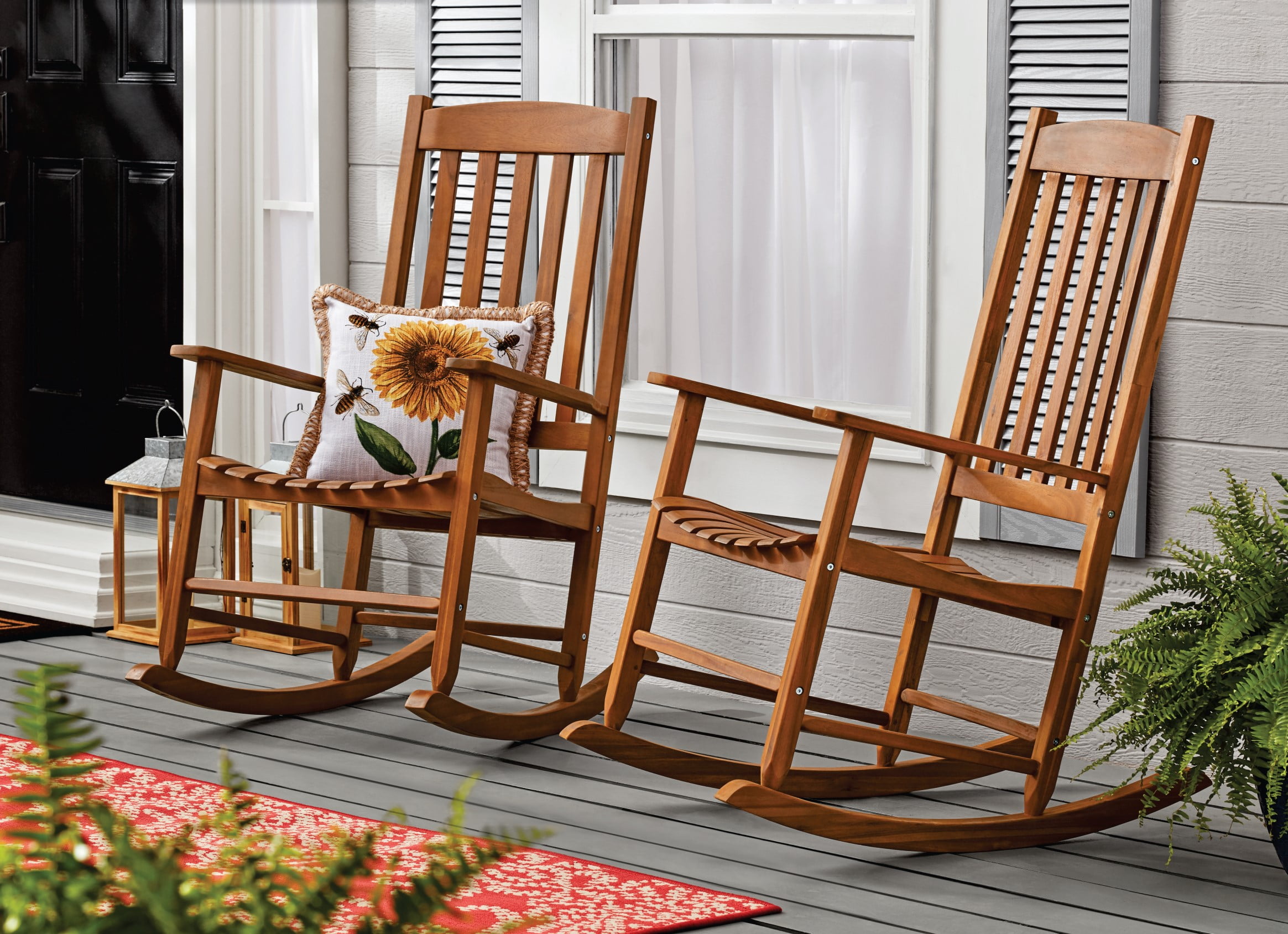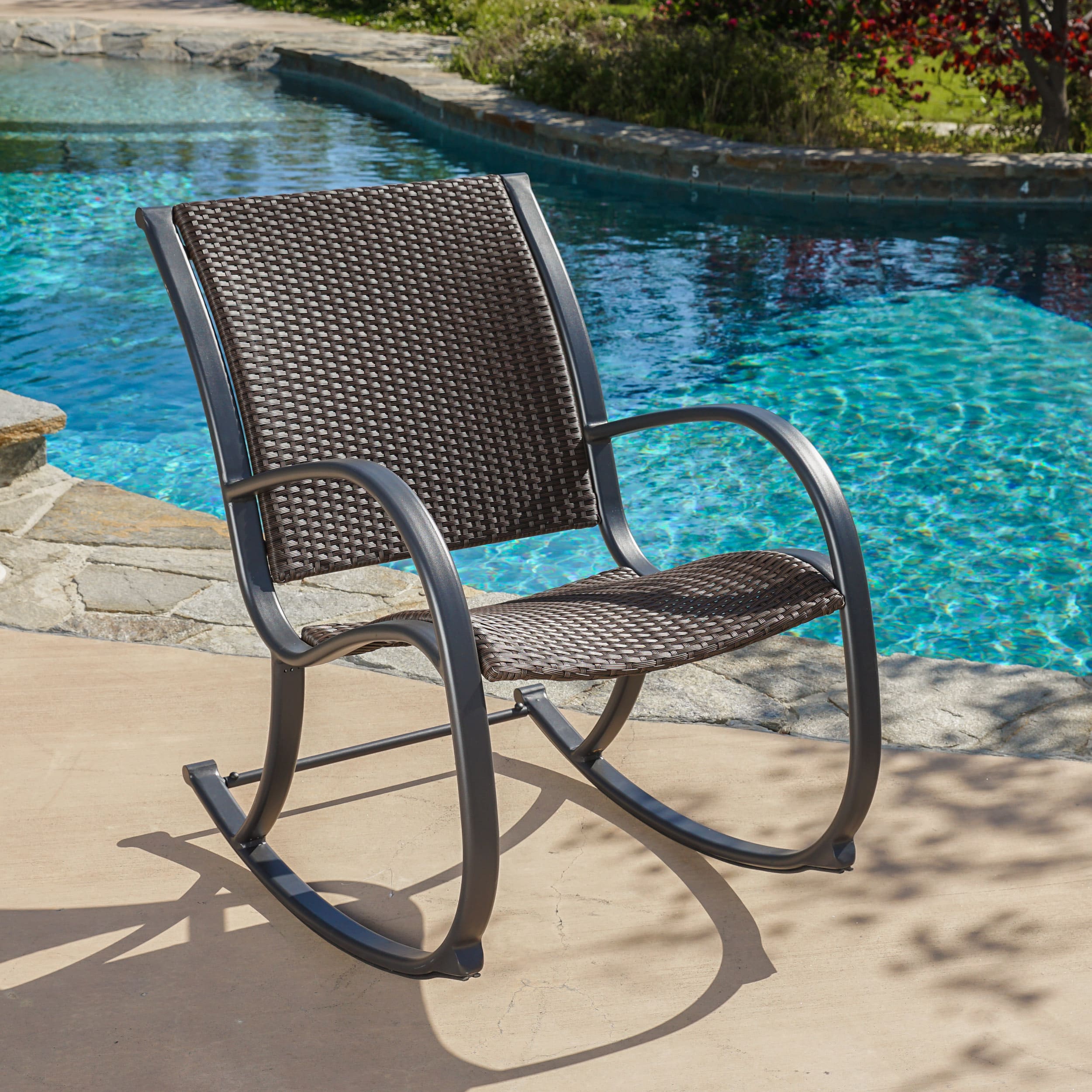The Anatomy of a Rocking Chair: Rocking Chair Side View

A rocking chair, a timeless piece of furniture, offers comfort and a gentle rhythmic motion. From a side view perspective, its design reveals the intricate interplay of components that contribute to its functionality and aesthetics. Understanding the anatomy of a rocking chair is crucial for appreciating its unique characteristics and the engineering principles behind its construction.
Components of a Rocking Chair
The side view of a rocking chair reveals its fundamental components, each playing a vital role in its structure and functionality.
- Rocker: The rocker, a curved piece of wood or metal, is the defining element of a rocking chair. Its shape and curvature determine the rocking motion and the chair’s stability. The rocker’s design varies across different styles, impacting the rocking amplitude and the overall aesthetic.
- Seat: The seat provides the primary support for the user. Its shape, size, and cushioning influence comfort and ergonomics. The seat’s position relative to the rockers affects the rocking motion and the chair’s overall balance.
- Backrest: The backrest offers support for the user’s back. Its height, shape, and angle contribute to comfort and posture. The backrest’s design can also influence the chair’s visual appeal.
- Legs: The legs provide stability and support for the chair. Their length and angle are crucial for maintaining balance during rocking. The legs’ design can vary from simple straight legs to more intricate curved or flared styles.
- Arms: Arms provide additional support and comfort, particularly for the user’s forearms. They can be fixed or movable, depending on the design. The arms’ design and position affect the overall aesthetics and ergonomics of the chair.
Design Variations in Rocking Chair Styles
Rocking chairs have evolved over centuries, resulting in a diverse range of styles, each with its unique side view profile.
- Traditional Rocking Chairs: Often characterized by their simple, elegant designs, traditional rocking chairs feature curved rockers, a gently sloping backrest, and a comfortable seat. These chairs typically have straight legs and may or may not have arms. The side view profile of a traditional rocking chair emphasizes its classic lines and graceful curves.
- Modern Rocking Chairs: Modern rocking chairs often embrace minimalist designs and geometric shapes. They may feature sleek, angular rockers, streamlined seats, and low backrests. The side view profile of a modern rocking chair emphasizes its clean lines and geometric forms.
- Contemporary Rocking Chairs: Contemporary rocking chairs combine modern aesthetics with innovative design elements. They may incorporate unusual materials, unconventional shapes, and bold color schemes. The side view profile of a contemporary rocking chair often reflects its experimental nature and artistic expression.
Balance and Weight Distribution
The side view of a rocking chair is essential for understanding its balance and weight distribution. The rockers, the seat, and the legs work together to ensure stability and a smooth rocking motion.
- Center of Gravity: The center of gravity (CG) of a rocking chair is the point where its weight is concentrated. The CG should be positioned above the base of support, which is the area defined by the rockers. If the CG is too high or too far forward, the chair may tip over during rocking.
- Weight Distribution: The weight of the user and the chair itself must be distributed evenly across the rockers. The design of the seat and backrest influences weight distribution. A well-designed rocking chair ensures that the weight is distributed evenly, preventing the chair from tilting or rocking unevenly.
- Stability: The stability of a rocking chair is determined by its ability to maintain balance during rocking. The rockers’ curvature and the chair’s overall design play a crucial role in achieving stability. A well-designed rocking chair will rock smoothly and predictably, providing a comfortable and secure experience for the user.
The Rocking Motion

The rocking motion of a chair is a captivating interplay of physics and design. It’s a seemingly simple movement, but a closer look reveals a complex interplay of forces, geometry, and the chair’s unique shape. This section delves into the mechanics of rocking, analyzing the arc of movement and the forces involved from a side view perspective.
The Arc of Movement
The rocking motion of a chair is characterized by a smooth, back-and-forth arc. From a side view, the chair’s rockers trace a curved path, resembling a portion of a circle. The arc’s shape and amplitude are influenced by the chair’s design, specifically the curvature of the rockers and the chair’s overall height.
Forces Involved
The rocking motion is driven by a combination of forces, primarily gravity and friction. As the chair rocks forward, gravity pulls it down, while friction between the rockers and the floor resists the motion. When the chair reaches its forwardmost point, the force of gravity begins to pull it backward, and the friction acts to slow the motion. The interplay of these forces creates the smooth, rhythmic rocking motion.
The Impact of Chair Shape and Size
The shape and size of a rocking chair play a significant role in the rocking motion. From a side view, the chair’s height and the curvature of the rockers are crucial.
Chair Height
The chair’s height influences the amplitude of the rocking motion. A taller chair will have a wider arc of movement, while a shorter chair will have a smaller arc. This is because the higher the chair, the greater the distance the center of gravity must travel during the rocking motion.
Curvature of the Rockers
The curvature of the rockers directly impacts the smoothness and stability of the rocking motion. A gentle curve creates a smooth, gradual rocking motion, while a sharper curve can result in a more vigorous and potentially less stable rocking motion.
Comparison of Rocking Chair Designs
Different rocking chair designs exhibit unique characteristics in their rocking motion, clearly visible from the side view.
Traditional Rocking Chair
The classic rocking chair typically features a wide, gently curved rocker. This design produces a smooth, rhythmic rocking motion with a wide arc.
Modern Rocking Chair
Modern rocking chairs often feature a more compact design with a narrower rocker and a lower seat height. This results in a shorter arc of movement and a potentially faster rocking motion.
Swivel Rocking Chair
Swivel rocking chairs incorporate a swivel base, allowing for additional movement beyond the traditional rocking motion. From a side view, the swivel base is clearly visible, contributing to the chair’s unique movement capabilities.
The Rocking Chair in Art and Design

The rocking chair, a symbol of comfort and tranquility, has transcended its practical function to become a recurring motif in art and design. Its distinctive form, characterized by its gently curved frame and rhythmic motion, has captivated artists and designers for centuries, inspiring countless interpretations that reflect diverse cultural perspectives and artistic styles. Exploring the side view of the rocking chair in art and design reveals not only its aesthetic appeal but also its capacity to evoke emotions, convey ideas, and illuminate cultural significance.
The Rocking Chair as a Subject in Art, Rocking chair side view
The side view of a rocking chair, with its elegant curves and graceful lines, provides a compelling perspective for artists seeking to capture its essence. This view highlights the chair’s form, emphasizing its structural integrity and the subtle interplay of its components. The rocking chair’s side view often serves as a visual anchor, grounding the artwork and providing a sense of stability amidst the dynamism of the rocking motion.
-
Paintings:
The rocking chair has been a popular subject in paintings throughout history, appearing in works ranging from still lifes to portraits to landscapes. Artists have employed a variety of techniques to depict the rocking chair, from realistic representations to more abstract interpretations.-
Winslow Homer’s “The Country School” (1871):
This iconic painting depicts a rural schoolhouse with a rocking chair prominently featured in the foreground. The chair’s side view, rendered in a realistic style, adds a sense of tranquility and familiarity to the scene. -
Grant Wood’s “American Gothic” (1930):
In this famous painting, the rocking chair, while not explicitly depicted, is implied by the presence of the chair’s back legs, which extend from the bottom of the canvas. The rocking chair’s absence, yet its implied presence, contributes to the painting’s sense of austerity and restraint.
-
Winslow Homer’s “The Country School” (1871):
-
Sculptures:
Sculptors have also been drawn to the rocking chair’s form, creating works that explore its physicality and abstract qualities.-
Henry Moore’s “Reclining Figure” (1929):
This monumental sculpture, while not depicting a rocking chair directly, evokes its form through its sinuous curves and sense of repose. The sculpture’s side view emphasizes its elongated form and the subtle play of light and shadow. -
Claes Oldenburg’s “Giant Rocking Chair” (1962):
This oversized sculpture, crafted from painted fiberglass, exaggerates the rocking chair’s form, transforming it into a playful and monumental object. The side view of the chair, with its exaggerated proportions, creates a sense of whimsy and invites viewers to contemplate the relationship between scale and perception.
-
Henry Moore’s “Reclining Figure” (1929):
-
Photography:
Photographers have captured the rocking chair in various settings, highlighting its versatility and its ability to evoke different emotions.-
Walker Evans’ “Untitled (Rocking Chair)” (1936):
This stark photograph, taken during the Great Depression, captures a weathered rocking chair on a porch. The side view of the chair, with its worn wood and faded paint, speaks to the passage of time and the resilience of everyday objects. -
Stephen Shore’s “Untitled (Rocking Chair)” (1972):
This photograph, taken in a suburban setting, presents a rocking chair in a more idealized context. The chair’s side view, with its clean lines and vibrant colors, reflects the optimism and consumerism of the 1970s.
-
Walker Evans’ “Untitled (Rocking Chair)” (1936):
Rocking chair side view – The side view of a rocking chair reveals its graceful curves and the intricate details of its construction. A particularly charming example is the lloyd loom wicker rocking chair , with its woven wicker seat and back, and its gently swaying motion.
From the side, you can appreciate the delicate balance of the chair, a testament to the craftsmanship that goes into these timeless pieces.
A rocking chair viewed from the side reveals its graceful curves and the gentle sway of its motion. The design often evokes a sense of nostalgia, and a popular choice for children is the little tikes victorian rocking chair , which captures the charm of classic furniture with its intricate details.
From this side perspective, you can also see how the chair’s sturdy construction ensures years of enjoyment for little ones.
